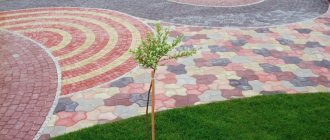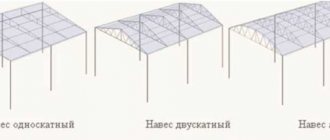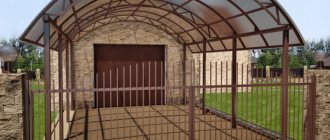Many people begin landscaping the territory of a private house with paving stones in the yard. It’s easy to get confused in the variety of choices for patio tiles; you need to know which material is better and how to correctly and beautifully lay it on the property.
Paving slabs are very popular among owners of summer cottages and country houses
Beautiful examples of finished sidewalks and paths in the photo
Nuances of coating operation
Before you start decorating your yard with FEM shaped paving elements, you need to learn how to properly plan the topography of the site and reduce the budget for landscaping the area. FEM is a budget finishing option compared to asphalt concrete pavement; it allows you to level out unevenness by terracing and making slopes necessary for gravity removal of rain and melt runoff.
To lay paving slabs evenly and ensure maximum coverage life, you should take into account the nuances of operation:
- if loads are planned only from pedestrian traffic, you can use thin paving slabs 3 - 5 cm over an underlying layer of sand or crushed stone;
- when using the courtyard area as a parking lot or to ensure the entry of trucks (vacuum trucks, unloading firewood, fertilizers), it is necessary to use paving stones 5 - 8 cm thick and reinforce the base with a concrete slab.
The thickness of paving slabs depends on operational loads.
Important! Storm drainage (point or linear) is necessary in any case, since FEMs are made of concrete, rubber or polymer concrete, and all these materials retain moisture on the surface.
Preparation for installation
There are a number of steps that must be completed before actually laying the tiles. One of them is preparing the area for the subsequent creation of paving slabs. It involves holding certain events.
Before starting to lay the material, it is necessary to remove the turf from the area on which the covering will be created to a depth of 15 cm. Then the cleared space should be cleaned. Seeds and plant roots should be removed.
Recent Entries
Chainsaw or electric saw - what to choose for the garden? 4 mistakes when growing tomatoes in pots that almost all housewives make Secrets of growing seedlings from the Japanese, who are very sensitive to the soil
If the site where the coating is laid is dominated by clay soils, then in this case it is mandatory to install a drainage system. It is necessary to make a slight slope, due to which water will drain from the coating.
After this, it is necessary to perform competent tamping using available tools. For example, you can use an ordinary log, which will do the job perfectly.
Next, you need to dig ditches in which curbs or side stones should be installed.
Then you need to prepare a concrete pad on which curbs or stones will be installed. When the cushion is created, prepared stones are laid out to mark the boundaries of the covering.
Paving the yard with paving slabs
The tiles should be laid taking into account the technology features:
- FEM shaped paving elements in 90% of cases are laid on sand, paving (a mixture of cement and sand) or screenings, that is, on bulk material that does not have a stable geometry;
- To ensure the spatial rigidity of the road surface during operation, grit or sand must be poured into a box-shaped structure to prevent spillage; for this, garden borders, storm drainage trays and elements of the building’s load-bearing structures (foundation, plinth) are used.
To ensure the rigidity of the structure, a spatial box is needed, for example, from curbs.
Advice! It is better to calculate the number of paving slabs after marking the yard, taking into account the layout scheme, the presence of curved sections and retaining walls for terracing.
Marking
At this stage, it is necessary to create a single horizontal level of the yard, create slopes and outline the paving area with cords. To lay tiles on loose mixtures, you need a rigid base, preferably from soils with a minimum clay content. In practice, the developer faces the following problems:
- the presence of an arable layer - chernozem contains an excess amount of organic matter, which rots under the road surface and the soil gives uncontrolled shrinkage under the paving stones;
- frost heaving - after being saturated with rainwater, soil particles do not evenly increase in volume, the soil swells, destroying and pushing the coating out;
- complex terrain - with small differences in height, tiles can be laid without planning the yard, since these slopes are necessary for gravity removal of sediments; in other cases, the yard will have to be terraced with curbs, gabions or concrete retaining walls.
Marking a complex pattern of paving slabs in the yard.
The latter option automatically adds steps to transition between terraces. It is better to make them from FEM elements in order to maintain the unity of the landscape design style.
Therefore, marking is necessary to outline the paving zone, from the surface of which the fertile layer will be removed and replaced with non-metallic material. To do this, pegs or cast-offs are used, the cord is pulled along the outer edge of the curbs or storm drainage trays.
Base requirements
If there is clay in the soil, it will swell in winter and destroy the coating. On a fresh embankment, on the contrary, the soil will subside over time. Therefore, in the first case, part of the soil (upper 40 cm) is replaced with inert material (crushed stone, sand, screenings), in which there is no clay and swelling is minimized.
Crushed stone base for paving slabs.
In the second option, the black soil is also removed, a 15–20 cm layer of crushed stone is filled in and a 10 cm concrete base is cast. Figured paving elements are laid on a layer of sand with a minimum thickness of 7-8 cm or paving (1/6 cement, sand, respectively). All layers are necessarily compacted with a vibrating plate.
Preparing the mixture
You can lay the road surface using mortar, dry mixture, clean sand, or screenings. The first option is expensive, the coating has zero repairability and is extremely sensitive to movements of the base. Gartsovka does not provide any special advantages in comparison with pure sand, since for the normal formation of cement stone, at least a minimum water-cement ratio is required, and not moisture accidentally penetrating into the lower level. Dropping out is the best option.
Preparation of prancing from cement and sand.
Curbs and storm drains
The resource and quality of paving directly depend on the technology for installing storm gutters and curbs. These elements are higher than paving slabs; for them, trenches will have to be deepened around the perimeter. When laying them on the base, you should follow the following technology:
- installation on solution;
- leveling the top edge with a rubber hammer along the cord;
- adding mortar to the sides from the inside/outside for vertical fixation.
Curb installation.
The laid curb is covered from the outside with soil, from the inside with sand or crushed stone at the same level with the surface of the underlying layer. Storm drainage trays and storm water inlets are installed at the lowest points of the paving area. To reduce the budget, a storm drain can replace curbs on one side of the yard.
Laying solid tiles
The paving stones are laid on the prepared base using the following technology:
- backfilling of the contact layer - the space inside the rigid box, limited by curbs and elements of the foundation of the cottage, is filled with gritsovka (layer 3 cm) or clean sand, screenings (layer 4 - 5 cm);
- leveling - along any side of the paving area (usually long) beacons are laid on the sand, the distance between them is equal to the size of the rule, which removes excess bulk material when the tool moves along the guides;
- paving - according to the selected pattern and laying scheme, the tiles are mounted on leveled bulk material close to each other.
The rule is made from a flat board, in the lower part of which rectangular cuts are created on both sides with a hacksaw. Unlike tiles laid with glue, you can walk on paving stones right away, so it’s easier to work with the work in front of you. This allows you to level the entire paving surface with beacons and lay out FEM elements in one step, which dramatically increases productivity.
Advice! With high-quality alignment along the beacons, the paving slabs do not even need to be upset with a rubber mallet. After filling the seams, the entire surface of the FEM is leveled and compacted with a vibrating plate, eliminating manual labor.
Trimming and filling seams
It is possible to do without cutting only in areas of straight shape, and even then, not for all FEM collections. Trimming of paving slabs is necessary at junction points:
- at curbs, foundations, plinths;
- near storm drains and at intersections;
- on radial, winding sections.
The tiles are cut using a diamond disc or an angle grinder using stone tools. Unlike some curbs, paving slabs do not have reinforcement and are quite easy to cut.
For some modifications of FEM, manufacturers produce halves, which allows you to do without trimming.
At the last stage, the laid facing material is protected from displacement during operation. To do this, the seams are filled with quartz or quarry sand. Particles of these materials have a torn edge, so they self-weed inside the seams under their own weight, are not washed out by rain and are not blown away by the wind.
Sand is poured in heaps over the tiles, before compacting the lining with a vibrating plate, and swept with a brush over the entire surface of the yard. The material penetrates the seams on its own; after treating the surface with a vibrating plate, the remaining bulk material is swept away.











